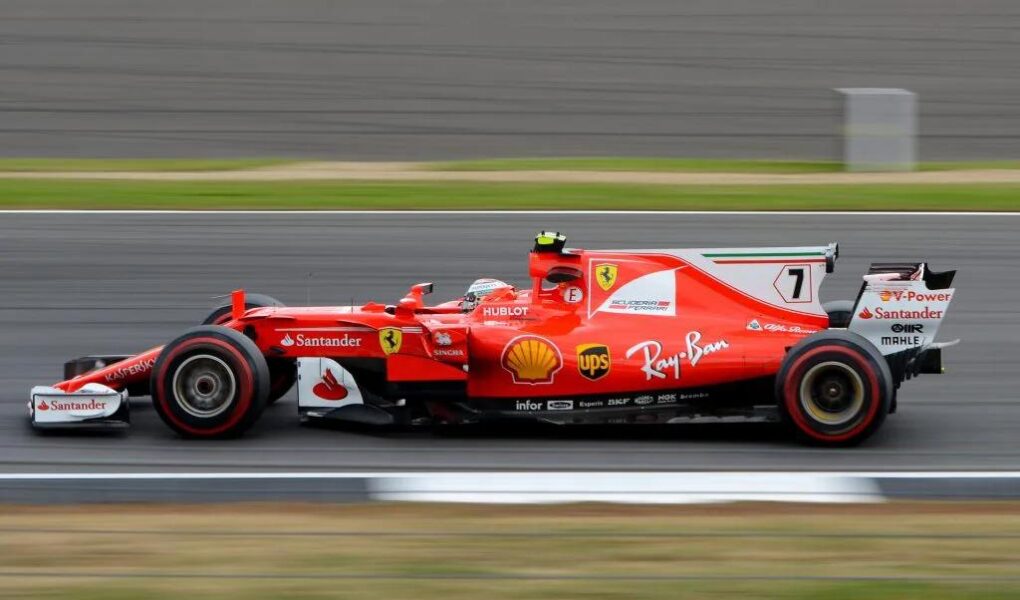Revving into History: The Allure of Grand Prix Race Cars
The world of motorsport has long captivated the imagination of enthusiasts and casual spectators alike, with its dazzling blend of speed, precision, and cutting-edge engineering. At the heart of this thrilling spectacle lies the Grand Prix race car, a marvel of automotive innovation that epitomizes the relentless pursuit of performance and design. From the roaring engines that echo through winding circuits to the sleek silhouettes that slice through the air, these racing machines are not just vehicles; they are a testament to human ingenuity and the spirit of competition. In this exploration, we will delve into the rich history, iconic designs, and technological advancements that define Grand Prix race cars, revealing how they have evolved into the formidable icons they are today—symbols of excellence and the quest for victory on the world’s most prestigious racing stages. Join us as we journey through the exhilarating landscape of Grand Prix racing, where every lap tells a story and each car embodies a legacy.
Table of Contents
- The Evolution of Grand Prix Race Cars: A Journey Through Speed and Innovation
- Engineering Excellence: Key Components That Define Performance
- The Role of Aerodynamics in Shaping Modern Race Car Design
- Racing Strategies and Pit Stops: Maximizing Efficiency on the Track
- Q&A
- Concluding Remarks
The Evolution of Grand Prix Race Cars: A Journey Through Speed and Innovation
The journey of race cars designed for the Grand Prix has been nothing short of revolutionary, showcasing the delicate balance between artistry and engineering. From the raw power of early machines crafted in the early 20th century, to today’s sleek, technologically advanced supercars, each era has forged its own identity. These vehicles have evolved through significant milestones, including:
- Lightweight Chassis: A shift towards materials like carbon fiber has enabled greater speed and agility.
- Aerodynamic Enhancements: Innovations in aerodynamics, such as the introduction of wings, have drastically improved downforce.
- Hybrid Technology: Recent years have seen a convergence of traditional combustion engines with electric power, paving the way for a greener future.
Each decade has introduced a host of champions, reflecting the technical advancements and bold designs that set the stage for fierce competition. The table below highlights some of the most iconic race cars that defined their respective eras, demonstrating how speed and innovation continually shape the sport:
| Year | Car Model | Key Innovation |
|---|---|---|
| 1955 | Maserati 250F | Improved suspension geometry |
| 1976 | McLaren M23 | Introduction of ground effect |
| 2000 | Ferrari F2000 | Enhanced telemetry systems |
| 2020 | Mercedes W11 | F1’s first extensive use of DAS |
Engineering Excellence: Key Components That Define Performance
In the world of grand prix racing, the quest for speed and efficiency is relentless, and several key components work in harmony to define performance at the highest level. Aerodynamics plays a pivotal role, with sophisticated body shapes and strategically placed wings designed to minimize drag while maximizing downforce. This intricate balance allows cars to maintain stability at high speeds, ensuring they adhere to the track with precision. Additionally, engine power is of utmost importance; the latest turbocharged V6 engines deliver thrilling performance while adhering to strict regulations. Coupled with advanced materials like carbon fiber, which provide both strength and lightness, these elements combine to create machines that are not only fast but also resilient under the rigorous conditions of racing.
Moreover, tire technology is crucial in achieving optimal grip and performance. Teams meticulously select tire compounds tailored to specific tracks and weather conditions, as a single mistake in tire choice can spell disaster. The suspension system also deserves attention; it must balance stiffness and flexibility, allowing for superior handling and the ability to absorb the stresses encountered on diverse surfaces. In essence, achieving engineering excellence in grand prix race cars involves the seamless integration of these components, each contributing to a symphony of performance that defines the outcome of every race.
The Role of Aerodynamics in Shaping Modern Race Car Design
The integration of aerodynamic principles in race car design has become crucial in achieving competitive performance and efficiency. Engineers and designers closely analyze airflow dynamics to maximize the car’s stability and speed. Key factors influenced by aerodynamics include:
- Drag Reduction: Minimizing air resistance allows drivers to achieve higher speeds.
- Downforce Generation: Increasing downforce enhances tire grip, allowing for sharper cornering.
- Weight Distribution: Optimizing weight through aerodynamic shapes ensures better handling and balance.
Modern racing teams employ advanced computational fluid dynamics (CFD) tools and wind tunnel testing to refine their designs. The impact of aerodynamics can be visualized through the following overview:
| Aerodynamic Feature | Function | Benefit |
|---|---|---|
| Front Spoiler | Diverts airflow to create downforce | Improved tire grip and stability |
| Rear Wing | Increases downforce at high speeds | Enhanced control in turns |
| Underbody Diffuser | Accelerates airflow below the car | Reduced drag and increased downforce |
Racing Strategies and Pit Stops: Maximizing Efficiency on the Track
In the world of Grand Prix racing, where milliseconds can make the difference between victory and defeat, effective race strategies and well-timed pit stops are crucial elements for success. Teams meticulously plan race strategies that often involve analyzing tire wear, fuel levels, and weather conditions. By employing advanced telemetry and data analytics, teams can decide the optimal moments for pit entries, ensuring that drivers spend the least amount of time off the track. Key components of a successful strategy may include:
- Understanding tire degradation: Selecting the right tire compounds for various track conditions.
- Fuel management: Balancing speed and fuel conservation to maximize stints.
- Adapting to competitor strategies: Monitoring rivals’ performance to inform adjustments.
Furthermore, efficient pit stops are an art form that involves split-second timing and flawless coordination. Teams practice their pit stop routines relentlessly, striving to reduce pit times to a minimum. The ideal pit stop encompasses the quick change of tires, refueling, and any necessary adjustments, all performed by a synchronized crew. A typical pit stop can be broken down into key phases, as illustrated below:
| Phase | Action | Duration |
|---|---|---|
| Entry | Braking and position alignment | 2 seconds |
| Tire Change | Four tires swapped | 3 seconds |
| Refueling | Gas replenishment (if applicable) | 2 seconds |
| Exit | Accelerate back onto the track | 2 seconds |
Q&A
Q&A: All About Grand Prix Race Cars
Q: What exactly defines a Grand Prix race car?
A: A Grand Prix race car is a high-performance vehicle designed specifically for racing in Formula One (F1) competitions. These cars are engineered for speed, agility, and aerodynamic efficiency, incorporating advanced technologies that push the boundaries of automotive design. Each car is tailored to comply with strict regulations set by the FIA (Fédération Internationale de l’Automobile), which ensures fair competition while allowing teams to innovate.
Q: How do Grand Prix race cars differ from regular sports cars?
A: While regular sports cars are designed for comfort and everyday drivability, Grand Prix race cars focus solely on performance. They are equipped with lightweight materials such as carbon fiber, have powerful hybrid engines, and frequently feature components like sophisticated aerodynamics and advanced suspension systems. Additionally, their design caters to high-speed cornering and braking, making them more functional on a racetrack than on ordinary roads.
Q: What is the importance of aerodynamics in these cars?
A: Aerodynamics plays a crucial role in the performance of Grand Prix race cars. Efficient airflow around the car reduces drag and increases downforce, allowing the vehicle to maintain higher speeds while enhancing grip on the track. Teams leverage wind tunnels and computational fluid dynamics (CFD) to fine-tune their designs, resulting in cars that can handle the extreme conditions of high-speed racing.
Q: How much power do these race cars generate?
A: Power output varies among teams and car specifications, but a modern Grand Prix race car typically generates between 800 to 1,000 horsepower, thanks to a combination of turbocharged engines and hybrid technology. This immense power allows the cars to accelerate from 0 to 60 mph in just a few seconds, showcasing the incredible engineering feats behind their performance.
Q: What are some notable technological innovations in Grand Prix race cars?
A: Recent innovations include hybrid power units that combine traditional internal combustion engines with electric motors, energy recovery systems that harness wasted energy during braking, and advanced telemetry that provides real-time data communication between the car and the pit crew. Innovations also extend to the tires, which are specially formulated for optimal performance under varying track conditions.
Q: How do teams ensure safety for drivers in these high-speed machines?
A: Safety is paramount in Formula One, and teams have implemented various features to protect drivers. This includes reinforced cockpits, known as the halo device, which protects the driver’s head from debris, and crumple zones designed to absorb impact energy during crashes. Additionally, drivers are required to wear specialized suits, helmets, and harnesses that enhance their safety on the track.
Q: What is the role of a driver in a Grand Prix race car?
A: The driver not only controls the car but also acts as a critical component of the team’s strategy. Exceptional hand-eye coordination, quick reflexes, and deep knowledge of the car’s handling traits are essential qualities for success. Drivers communicate endlessly with their engineers, adapting their driving style according to real-time data about tire wear, fuel levels, and track conditions.
Q: How has the design of Grand Prix race cars evolved over the years?
A: The design of Grand Prix race cars has transformed dramatically since the first races in the early 20th century. Over the decades, advancements in materials science, aerodynamics, and engine technology have led to lighter, faster, and more efficient vehicles. As rules and regulations are updated, teams continually innovate to improve their cars, making each season’s models unique and high-tech.
Q: What does the future hold for Grand Prix race cars?
A: The future of Grand Prix race cars is likely to be shaped by further innovations in hybrid and electric technologies, as the motorsport community seeks to enhance sustainability. With increasing emphasis on environmental responsibility, the sport may evolve to incorporate more renewable energy sources while maintaining the thrilling spectacle that fans adore. As technology advances, the designs may become even more futuristic, pushing the boundaries of performance and efficiency.
Concluding Remarks
As the engines fade and the last echoes of tire screeches dissipate into the sunset, we are left to reflect on the fascinating world of Grand Prix race cars. These machines embody the pinnacle of engineering prowess, a blend of art and science that captivates fans and engineers alike. From the roaring sounds on the track to the intricate details of their design, each car tells a story of innovation, speed, and relentless pursuit of excellence. Though the checkered flag may signal the end of a race, the legacy of these formidable vehicles continues to inspire future generations. As we look to the horizon, we can expect the relentless evolution of technology and design in Grand Prix racing, promising thrilling spectacles and groundbreaking achievements in motorsport. So whether you’re a dedicated fan or a newcomer to this high-octane world, one thing is certain— the spirit of Grand Prix racing will forever burn bright, racing towards an exhilarating future.



